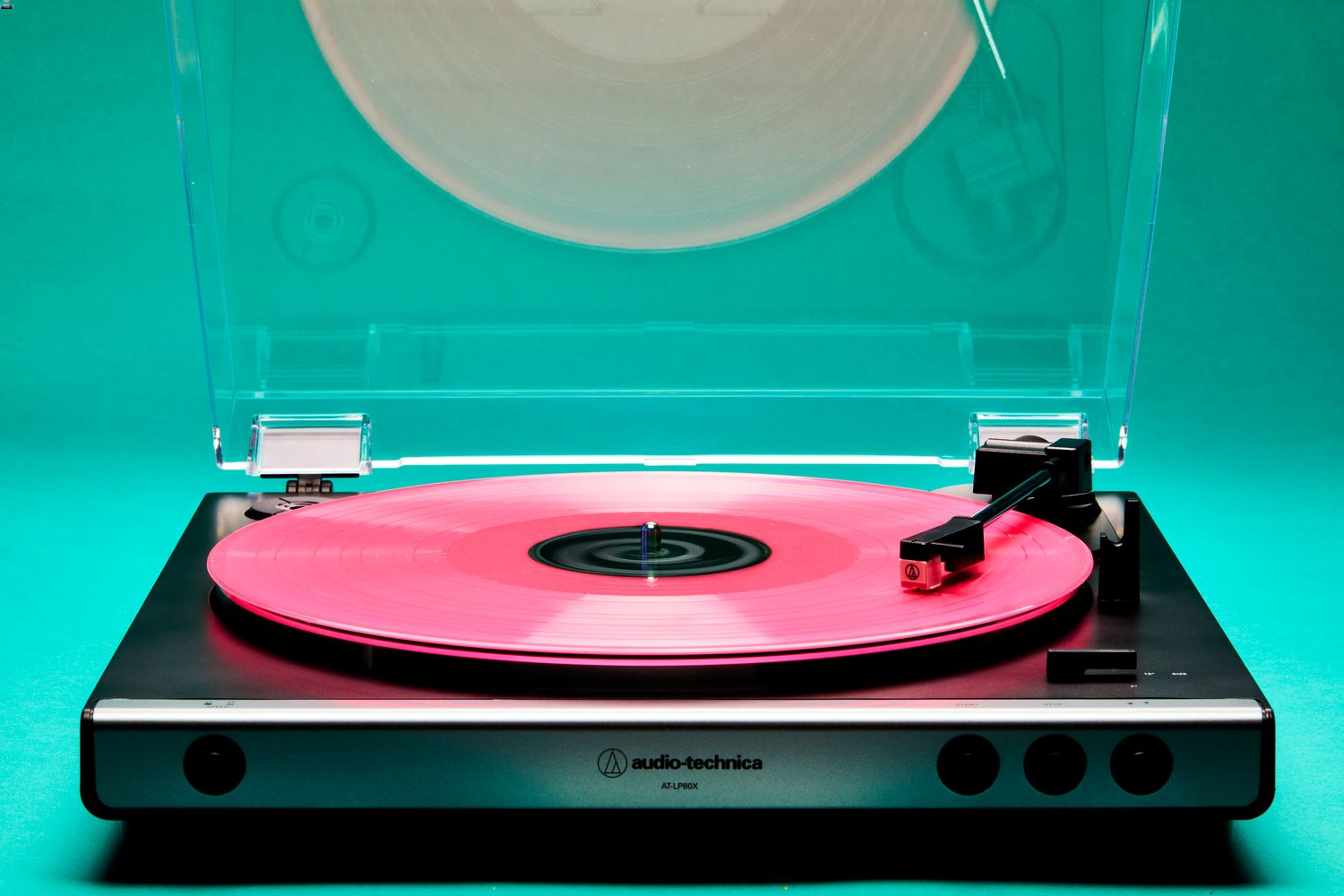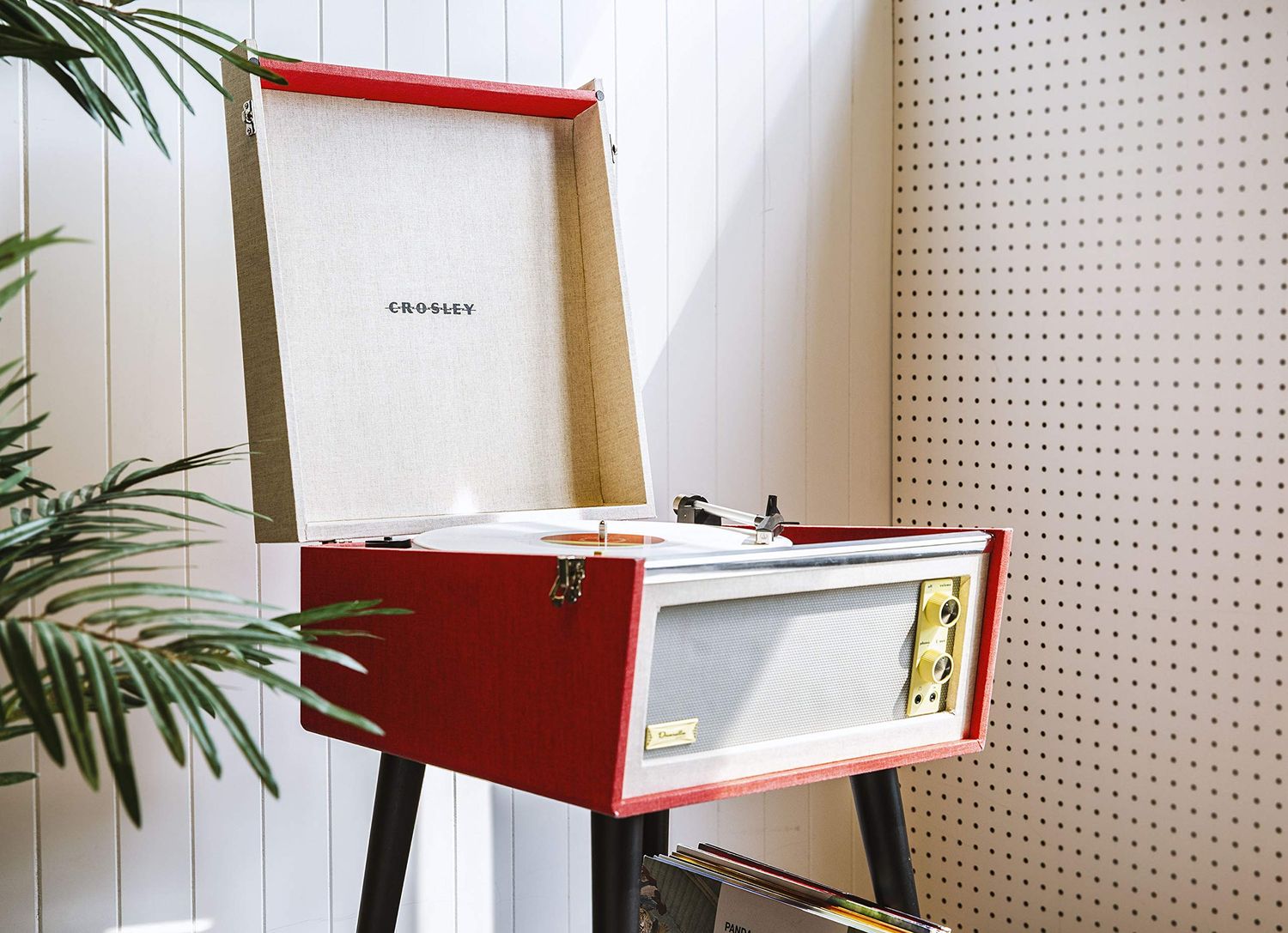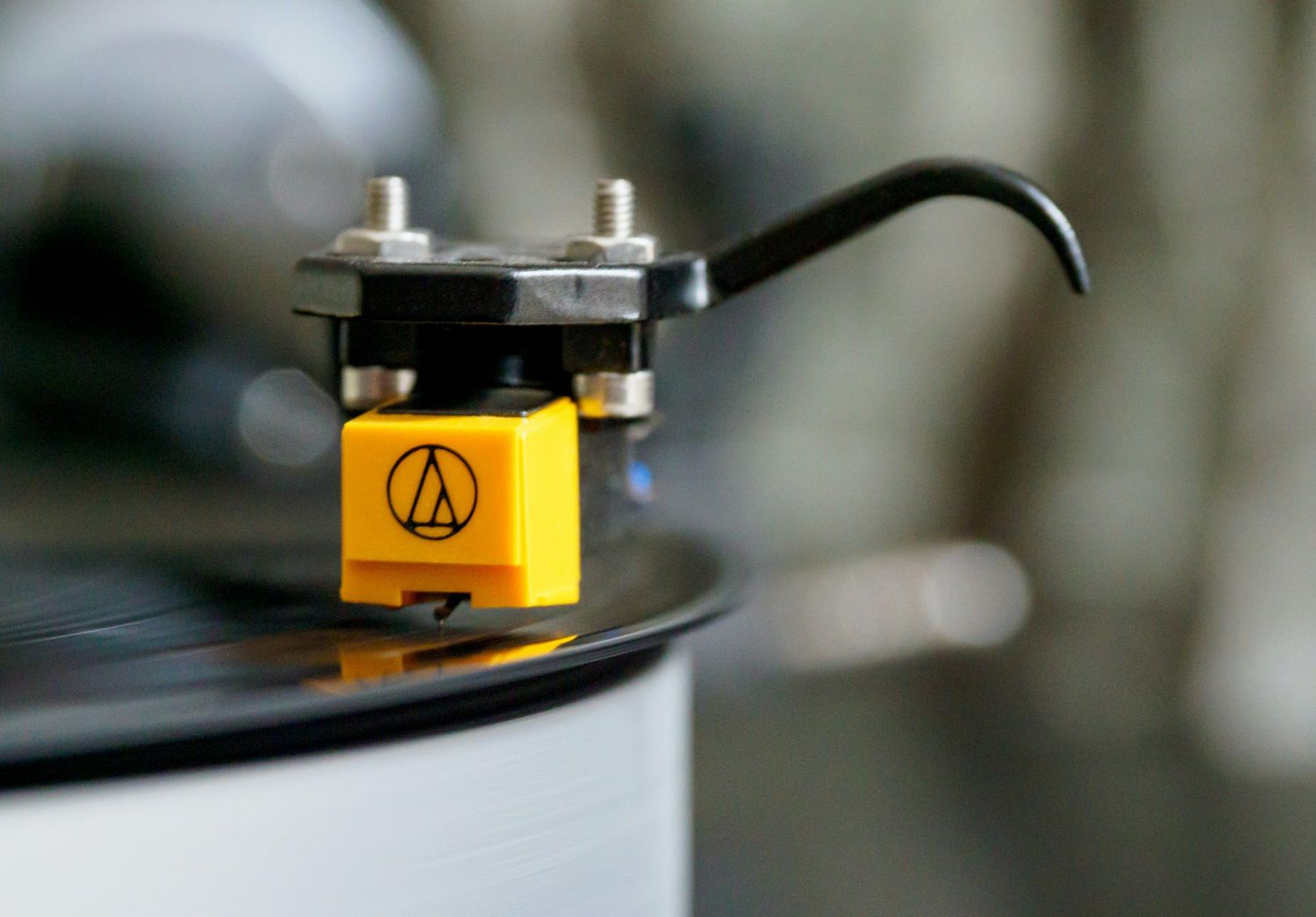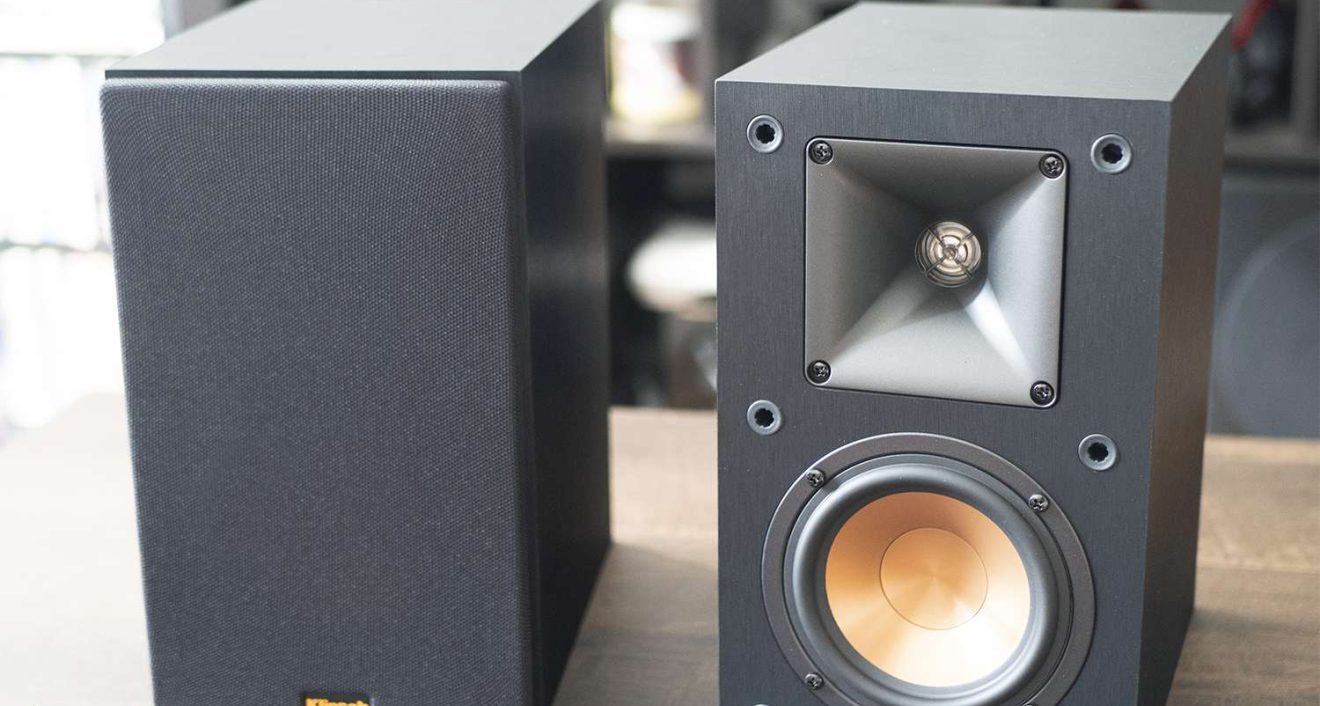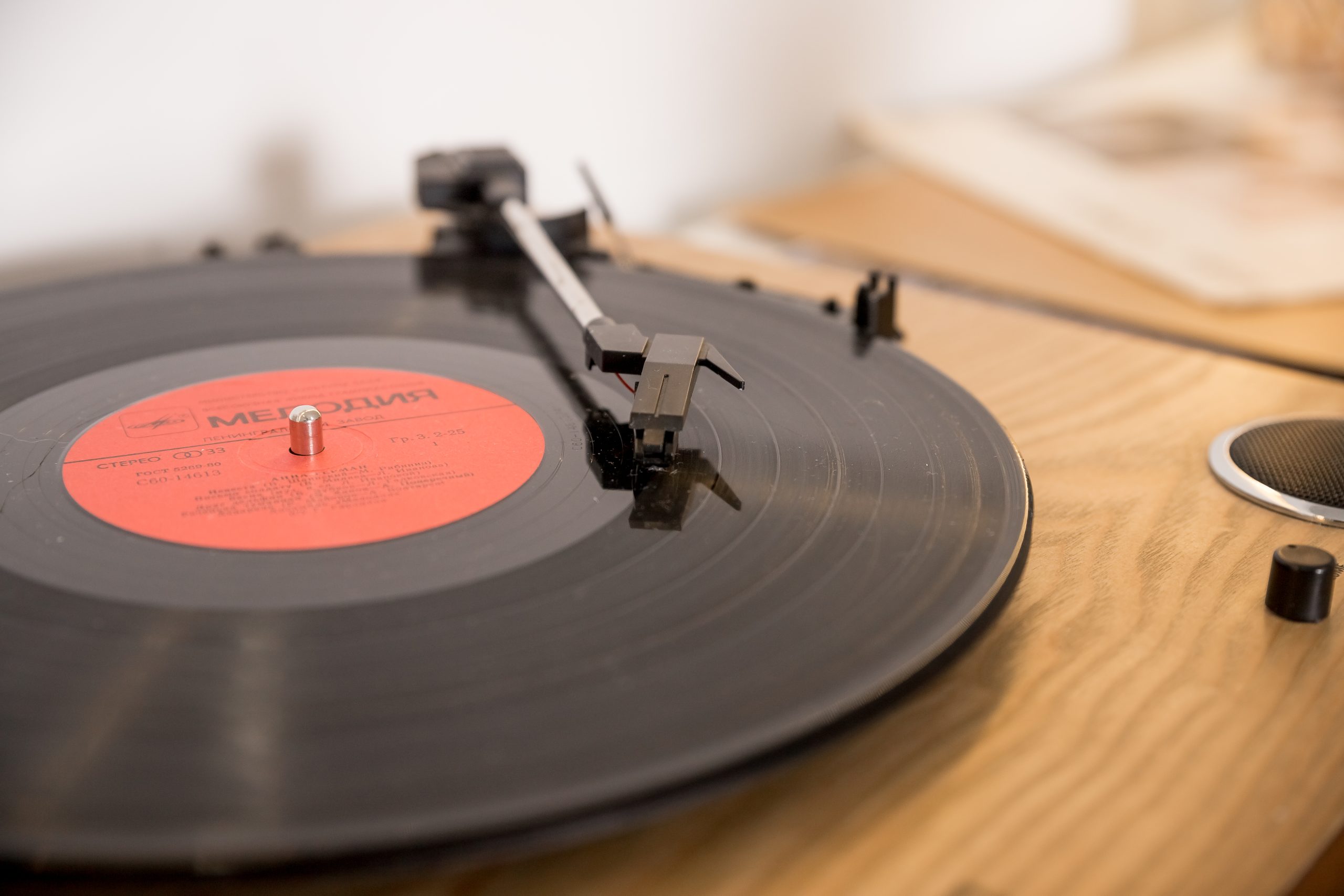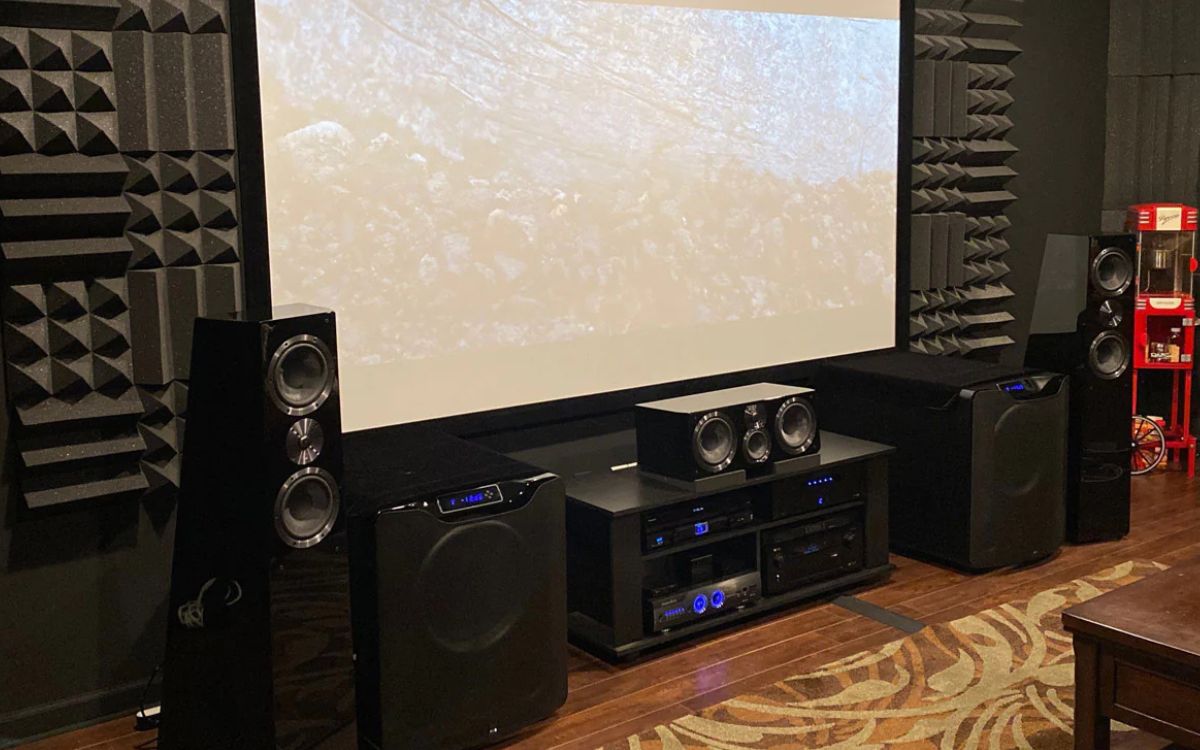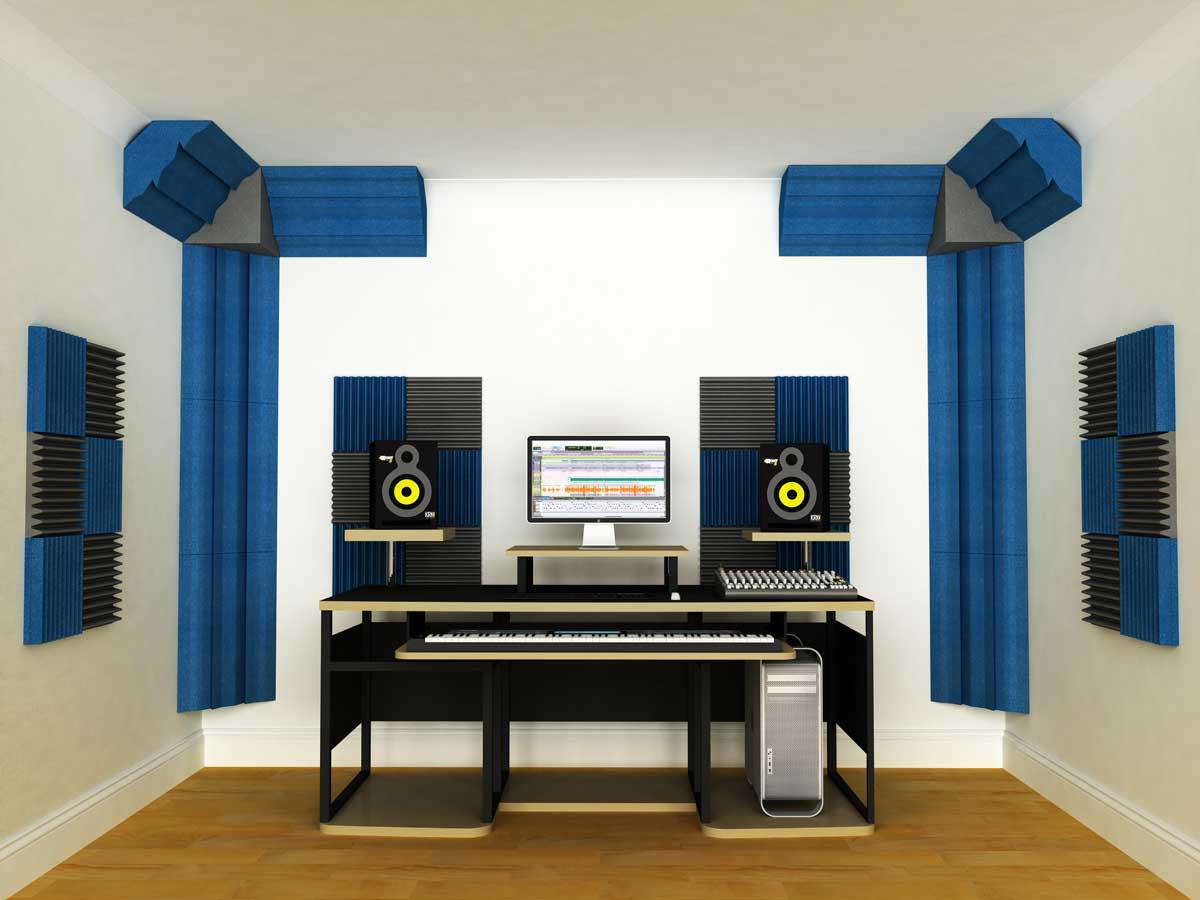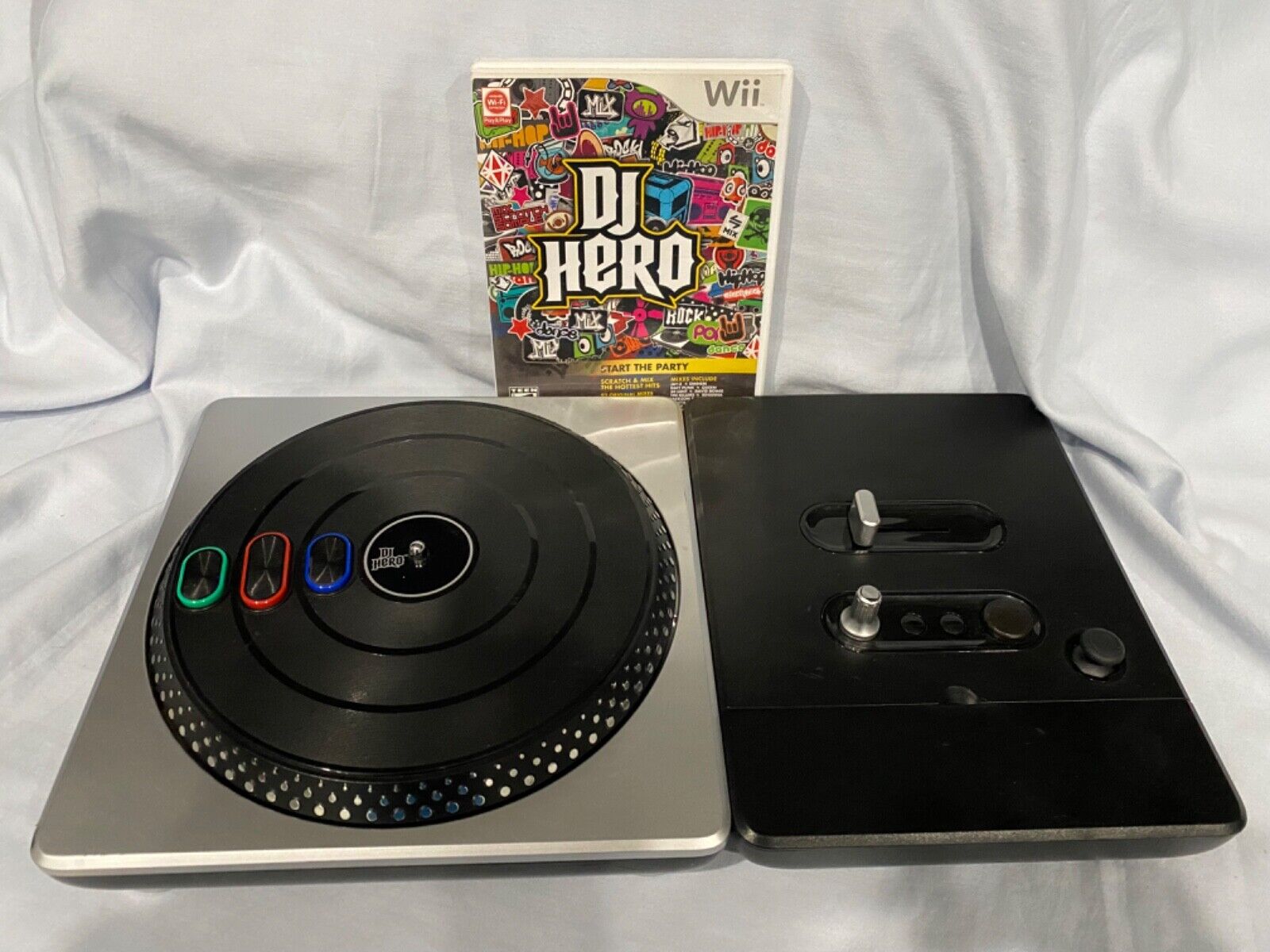Home>Devices & Equipment>Turntable>Where To Place Turntable


Turntable
Where To Place Turntable
Modified: January 22, 2024
Looking for the perfect spot to place your turntable? Discover the best locations for your turntable setup and maximize your audio experience with Turntable Placement Guide.
(Many of the links in this article redirect to a specific reviewed product. Your purchase of these products through affiliate links helps to generate commission for AudioLover.com, at no extra cost. Learn more)
Table of Contents
Introduction
When it comes to enjoying music with the ultimate sound quality, there’s nothing quite like a turntable. The warmth and depth of vinyl records create a unique listening experience that many music enthusiasts swear by. Whether you’re a seasoned vinyl collector or just starting your journey into the world of analog sound, one important decision you’ll need to make is where to place your turntable.
The location of your turntable can greatly impact your listening experience. Factors such as room acoustics, convenience, and even aesthetics should be taken into consideration. By choosing the right location, you can maximize the performance of your turntable and create a dedicated space for enjoying your favorite records.
In this article, we will explore various options for placing your turntable and discuss the pros and cons of each location. From the traditional living room setup to dedicated listening rooms, bedrooms, home offices, and even outdoor spaces, we’ll provide insights to help you make an informed decision.
Factors to Consider when Choosing a Location
Before diving into the various options for placing your turntable, it’s important to consider a few key factors that can influence the overall listening experience:
1. Acoustics: The acoustics of the room can greatly impact the sound quality of your turntable. Rooms with hard surfaces like tile or hardwood floors, and minimal soft furnishings, can create a more reflective sound that may not be ideal for accurate playback. On the other hand, rooms with carpeting, curtains, and upholstered furniture can help absorb excessive reflections and create a more balanced sound.
2. Vibration and Stability: Turntables are sensitive to vibrations, which can result in audible distortion. It’s essential to choose a location that minimizes external vibrations. Avoid placing your turntable near speakers or any other sources of vibration. Additionally, make sure the surface on which the turntable rests is stable and level to avoid tracking and playback issues.
3. Accessibility: Consider the convenience of accessing and operating your turntable. Choose a location that allows easy access to the record collection, as well as the ability to maneuver around the turntable without causing accidental bumps or disruptions.
4. Electrical Outlets: Ensure that the chosen location is near an electrical outlet to power your turntable and any accompanying audio equipment without the need for long or unsightly extension cords.
5. Aesthetics: While sound quality should be a top priority, it’s also essential to consider the aesthetic appeal of the chosen location. Select a spot that complements your existing décor and enhances the overall ambiance of the room.
By taking these factors into account, you can narrow down the options and choose a location that offers the best balance between sound quality, convenience, and visual appeal.
Option 1: Living Room
The living room is a popular choice for placing a turntable due to its central location and often spacious layout. Here are some considerations when setting up your turntable in the living room:
Pros:
- The living room is usually the heart of the home, making it a convenient and accessible location for enjoying your vinyl collection.
- If you frequently entertain guests, having the turntable in the living room allows you to share your love for vinyl records with others.
- Living rooms often have plush furniture and curtains, which can help absorb sound reflections and improve acoustics.
Cons:
- Living rooms can be bustling with activity, resulting in potential vibrations and disruptions to your listening experience. Consider placing the turntable away from high-traffic areas or using isolation pads to minimize vibrations.
- Large windows and open layouts often found in living rooms can introduce outside noise and affect the sound quality. Utilize curtains or blinds to reduce external noise and reflections.
- If your living room is frequently used for other purposes such as watching TV or hosting parties, you may need to consider the impact of those activities on the turntable’s performance.
Overall, the living room provides a convenient and social location for your turntable if the potential drawbacks can be mitigated and if you prioritize accessibility and sharing your vinyl collection with others.
Option 2: Dedicated Listening Room
For those who are truly passionate about their vinyl collection and the quality of their listening experience, a dedicated listening room can be a dream come true. Here are the key considerations for setting up a turntable in a dedicated listening room:
Pros:
- A dedicated listening room allows for optimal acoustic treatment, creating an environment that minimizes sound reflections and enhances the overall sound quality.
- You can customize the layout and furniture of the room to maximize the listening experience, with strategically placed speakers and seating arrangements.
- The absence of distractions and external activities in a dedicated listening room allows for a truly immersive and focused music listening experience.
- Aesthetically, a dedicated listening room can be designed to reflect your personal taste, creating a unique and cozy space for enjoying your vinyl collection.
Cons:
- Setting up a dedicated listening room requires additional space, which may not be feasible for everyone.
- Acoustic treatments can be an added expense, as they involve materials such as sound-absorbing panels, bass traps, and diffusers to optimize the room’s sound.
- A dedicated listening room may not be as accessible or suitable for sharing the music listening experience with guests or family members, as it is a more intimate and personal space.
A dedicated listening room is an excellent option for audiophiles who want to create a space dedicated to their love for music and vinyl records. It offers unparalleled control over the sound quality and ambiance, allowing you to immerse yourself fully in the music.
Option 3: Bedroom
Your bedroom can be an unexpected yet excellent location for your turntable setup. Consider the following factors when setting up your turntable in the bedroom:
Pros:
- The bedroom is often a quiet and private space, making it ideal for focused and immersive listening sessions.
- Having your turntable in the bedroom allows you to enjoy your vinyl collection as part of your bedtime routine, creating a relaxing and therapeutic experience.
- If space permits, you can set up a cozy listening corner with comfortable seating and mood lighting to enhance the ambiance.
- With the right positioning and room layout, you can take advantage of the bedroom’s natural acoustics and enjoy a more intimate and personal sound experience.
Cons:
- Bedrooms can be smaller in size, limiting your options for speaker placement and overall room setup.
- If you share your bedroom with a partner or have roommates, consider the potential impact of your turntable setup on their sleep or personal space.
- Bedrooms typically have softer surfaces like carpets and curtains, which can absorb some of the high frequencies and affect the overall sound clarity.
If you value private and peaceful listening sessions, and want the convenience of enjoying your vinyl collection in the comfort of your own bedroom, this option could be a perfect fit for you.
Option 4: Home Office
Setting up your turntable in a home office can provide a unique and enjoyable listening experience while allowing you to combine work and music in one space. Consider the following factors when choosing to place your turntable in a home office:
Pros:
- Having your turntable in the home office allows you to enjoy music while working or taking breaks, providing a pleasant and motivating environment.
- You can create a dedicated listening area within your home office, complete with comfortable seating and proper speaker placement.
- If you work from home, having a turntable in your office can be a great way to unwind and relax during breaks, boosting your productivity and overall well-being.
- If clients or colleagues visit your home office, the turntable can be a conversation starter and showcase your musical tastes.
Cons:
- Home offices are often multifunctional spaces, so you need to consider the impact of other activities on your listening experience. Ensure that distractions and noise from work-related tasks do not hinder your enjoyment of the music.
- Acoustic treatment might be necessary to minimize sound reflections from office equipment and surfaces, as they can potentially affect the sound quality.
- If your home office is shared with others, consider their preferences and the potential impact of the turntable setup on their concentration.
The home office option offers the convenience of combining work and music, allowing you to create a productive and enjoyable environment while enjoying your vinyl collection.
Option 5: Entertainment Room
If you have an entertainment room or a dedicated space for leisure activities in your home, it can serve as an ideal location for your turntable. Here are some factors to consider when setting up your turntable in an entertainment room:
Pros:
- An entertainment room is designed for relaxation and leisure activities, making it a perfect fit for enjoying your vinyl collection with friends and family.
- You can set up a dedicated music corner within the entertainment room, complete with comfortable seating, speakers, and mood lighting for an immersive listening experience.
- Entertainment rooms generally have large surfaces and acoustic treatments such as carpets, curtains, and upholstered furniture, aiding in sound absorption and creating a more balanced listening environment.
- If your entertainment room is equipped with a home theater system or high-quality audio equipment, you can integrate your turntable into the existing setup for a truly impressive audio experience.
Cons:
- Entertainment rooms may be shared with other activities such as gaming, movie watching, or playing musical instruments. Consider the potential impact of these activities on your turntable’s performance and vice versa.
- The size and layout of the entertainment room can impact speaker placement and overall room setup. Ensure that you have enough space for optimal positioning of your turntable and speakers.
- If you have young children or pets, consider the potential risks of having delicate vinyl records and turntable equipment in a room that is frequented by them.
An entertainment room offers a versatile and dedicated space for enjoying your vinyl collection while providing opportunities for socializing and creating memorable experiences with loved ones.
Option 6: Basement or Attic
Utilizing your basement or attic as the location for your turntable setup can offer a unique and secluded space for enjoying your vinyl collection. Here are some considerations when choosing to place your turntable in the basement or attic:
Pros:
- Basements and attics are often quieter and less frequented areas of the house, providing a secluded and private environment for focused listening sessions.
- These spaces can be repurposed into dedicated listening rooms, allowing you to fully immerse yourself in the music without any distractions.
- Basements and attics generally have solid and stable flooring, reducing vibrations and potential disruptions to the turntable’s performance.
- With proper acoustic treatment, you can optimize the sound quality in these spaces, enjoying a more controlled and tailored listening experience.
Cons:
- Basements and attics may lack proper ventilation and temperature control, which can affect the longevity and performance of your turntable and vinyl records. Ensure adequate airflow and consider implementing humidity control measures if needed.
- Accessibility can be a challenge in basements or attics, especially if there is limited lighting or if you have difficulty navigating stairs or tight spaces.
- Depending on the basement or attic layout, you may need to invest in additional electrical wiring and outlets to power your turntable and audio equipment.
Transforming your basement or attic into a dedicated listening space can offer a secluded and personal sanctuary for enjoying your vinyl collection. Ensure proper ventilation, temperature control, and accessibility while taking advantage of the inherent privacy and potential for optimal sound quality in these areas.
Option 7: Kitchen or Dining Area
While it may not be your first thought, the kitchen or dining area can be a surprisingly convenient and enjoyable location for your turntable setup. Consider the following factors when placing your turntable in the kitchen or dining area:
Pros:
- Kitchens and dining areas often serve as the heart of the home, making it a central and easily accessible location for enjoying your vinyl collection during meals or while preparing food.
- These areas usually feature hard surfaces like tile or hardwood floors, minimizing sound absorption and creating a more lively and energetic audio experience.
- If you frequently entertain or host gatherings in your kitchen or dining area, having a turntable can provide a delightful and engaging atmosphere for your guests.
- You can integrate the turntable setup seamlessly into the existing kitchen or dining room design, blending it with the overall aesthetic appeal of the space.
Cons:
- Kitchens and dining areas may have background noise from appliances, conversations, or other activities. Consider the potential impact of these noises on your listening experience and if it aligns with your preferences.
- Ensure that the turntable setup is placed away from sources of moisture, heat, and food splatters, to protect both your equipment and vinyl records.
- The limited space in kitchens and dining areas may pose challenges for speaker placement and room layout. Consider compact and versatile speaker options that fit seamlessly into the space.
If you enjoy combining your love for music with culinary activities or hosting gatherings, placing your turntable in the kitchen or dining area can create a vibrant and lively atmosphere, enhancing your overall dining experience.
Option 8: Outdoor Space
For those who love the idea of enjoying their vinyl collection amidst nature or hosting outdoor gatherings with music, setting up your turntable in an outdoor space can be a refreshing and unique experience. Consider the following factors when choosing to place your turntable in an outdoor area:
Pros:
- An outdoor space allows you to enjoy music in a vibrant and natural environment, creating a relaxed and soothing atmosphere.
- Outdoor spaces offer plenty of room to set up a dedicated listening area with comfortable seating, strategically placed speakers, and outdoor-friendly furniture.
- If you regularly host outdoor events or gatherings, having a turntable can provide a delightful and entertaining experience for your guests.
- Nature’s own acoustics can add a unique and organic element to the sound, enhancing the overall listening experience.
Cons:
- Outdoor spaces are exposed to various weather conditions, which can damage your equipment and vinyl records. Ensure that the setup is protected from rain, direct sunlight, and extreme temperatures.
- Consider the potential background noise from nearby traffic, neighbors, or natural elements that may impact the clarity of the sound.
- Power supply and cable management can be challenging in outdoor spaces. Depending on the setup, you may need extension cords or battery-powered options for your turntable and speakers.
- Outdoor spaces may not be suitable for all-year-round use, especially in climates with severe weather or during colder seasons.
If you enjoy the idea of embracing the beauty of nature while indulging in your vinyl collection or creating memorable outdoor gatherings, setting up your turntable in an outdoor space can be a wonderful extension of your love for music.
Conclusion
Choosing the right location for your turntable is crucial to maximizing your listening experience and creating a dedicated space for enjoying your vinyl collection. From the traditional living room setup to dedicated listening rooms, bedrooms, home offices, entertainment rooms, basements or attics, kitchens or dining areas, and even outdoor spaces, there are various options to consider.
Each location has its own advantages and considerations. The living room offers convenience and social sharing, while a dedicated listening room provides the ultimate control over sound quality. The bedroom offers a private and relaxing environment, while the home office combines work and music. The entertainment room offers versatility for leisure activities, and the basement or attic can provide seclusion and optimization of sound. The kitchen or dining area can create a lively ambiance, and outdoor spaces offer a unique connection with nature.
Consider factors such as acoustics, vibration, accessibility, aesthetics, and electrical outlets when choosing a location. Strive to strike a balance between sound quality, convenience, and personal preferences while ensuring the safety and protection of your equipment and vinyl records.
Ultimately, the best location for your turntable will depend on your individual needs, preferences, and the available space in your home. Take the time to assess and experiment with different options to find the perfect spot where you can immerse yourself in the joy of vinyl playback and appreciate the unique sound and experience it offers.

